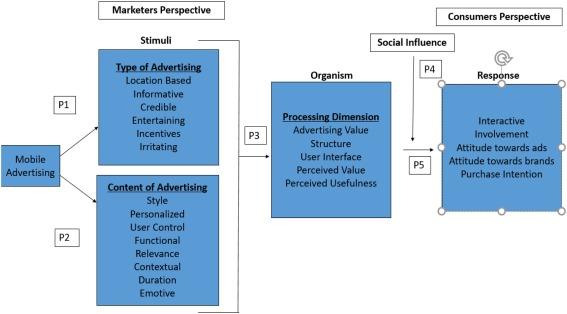Measuring the Impact of Bite-Sized learning: Key Metrics & Real Results
Introduction: Why Measure Bite-Sized Learning?
Bite-sized learning — also known as microlearning — has taken the world of organizational training and digital education by storm. From busy professionals to lifelong learners, everyone is embracing manageable, focused content segments that make up bite-sized learning. But as its popularity rises,one essential question remains: How do we accurately measure the impact of bite-sized learning?
In this complete guide,we’ll explore how to track,evaluate,and maximize the effectiveness of bite-sized learning. We’ll cover key metrics, real-world case studies, practical implementation tips, and much more — all designed to help you prove real results and foster a data-driven learning culture.
what is Bite-Sized Learning?
Bite-sized learning refers to educational content broken down into small,easily digestible segments. Typical modules might include short videos,quizzes,infographics,or even engaging podcasts lasting just a few minutes.Key advantages include adaptability, enhanced retention, and increased motivation to learn.
- Short learning sessions (usually 2-10 minutes each)
- Single, focused learning objectives
- Easy integration into daily routines
This approach has become especially relevant as remote and hybrid work models demand scalable, efficient training solutions.
why Measuring Learning Outcomes Matters
It’s tempting to assume that microlearning’s popularity equals effectiveness, but data-driven decisions are essential in any learning and development (L&D) strategy. By measuring bite-sized learning impact, organizations and educators can:
- Identify which content drives real retention
- Continuously optimize learning modules
- Justify learning investments to stakeholders
- Increase engagement and reduce time spent on ineffective training
Key Metrics for Measuring the Impact of bite-Sized Learning
To ensure your bite-sized learning program delivers on its promises, it’s crucial to track the right learning effectiveness metrics. here are the moast valuable metrics you should consider:
1.Completion Rate
Measures the percentage of learners who finish each learning module. high completion rates are a strong indicator of engaging,accessible content.
2.Knowledge Retention and Assessment Scores
Assessments and quizzes can measure immediate knowledge retention and understanding. Comparing pre- and post-module quiz scores reveals learning gains attributable to bite-sized modules.
3. Learning Submission (Behavioral Change)
Are learners applying new skills on the job? Behavioral assessments and workplace performance evaluations help indicate whether knowledge is being transferred into real-world practice.
4. Engagement Metrics
- Click-through rates on interactive elements
- Time spent on each module
- Frequency of return visits to the platform
5. User Feedback & Satisfaction
Gathering qualitative feedback via surveys and ratings provides valuable insights into learner experiences and areas for enhancement.
6. Business Impact metrics (ROI)
ultimately, how does bite-sized learning drive real business value? Track KPIs like staff productivity, reduced onboarding time, or performance improvements linked to completed microlearning pathways.
Proven Benefits of Measuring Bite-Sized Learning
- Improved Engagement: Learners complete courses more frequently enough when content is relevant and measured.
- Enhanced Retention: Targeted feedback on specific modules helps reinforce learning.
- Continuous Improvement: regular analysis of key metrics leads to better content design and updates.
- Scalability: Easily identify successful microlearning strategies to scale across departments or business units.
- Justifiable ROI: Data-driven results allow L&D teams to demonstrate tangible value to stakeholders.
Real Results: Case Studies in Bite-sized Learning
Case Study 1: Global Technology Firm
A major tech company sought to upskill its workforce in cybersecurity protocols. By deploying a bite-sized learning platform with short, scenario-based modules, they tracked:
- Completion rate rise from 60% (traditional courses) to 92%
- Quiz scores improved by 30% within three months
- Security incident reports reduced by 15% within six months
Case Study 2: healthcare Provider
A nationwide healthcare organization needed rapid onboarding for new staff. They shifted compliance and HIPAA training to microlearning and measured:
- Onboarding time reduced by 25%
- 95% average module satisfaction rating from learners
- Fewer repeated compliance mistakes, as reflected in post-training audits
These real-world results showcase the ROI of bite-sized learning when paired with the right metrics and strategic intent.
Practical Tips: How to Measure Bite-Sized Learning Effectively
- Define Clear Learning Objectives: each module should have a specific, measurable goal.
- Use Integrated Analytics Tools: Leverage your LMS or microlearning platform’s built-in dashboards for easy tracking.
- Implement Short, targeted Assessments: Use quizzes and interactive checks for knowledge to gauge retention.
- solicit Regular User Feedback: Run pulse surveys and collect module ratings after each session.
- track On-the-Job Application: Partner with managers to monitor workplace performance changes.
- Benchmark Over time: Compare results before and after introducing bite-sized learning modules for clearer ROI analysis.
First-Hand Experiences: Voices from the Field
“We saw a 40% spike in course completion after switching to bite-sized modules. Our team loves the flexibility and frequent, meaningful progress updates.”
– L&D manager, eCommerce Retailer
“Microlearning makes continuous training possible in our fast-paced environment. The short feedback loops and performance data help us tweak training on the fly.”
– HR director, Financial Services
Conclusion: Drive Real Learning Impact with Measurable Metrics
Bite-sized learning isn’t just a trend — it’s a powerful, efficient solution for employee development and digital education.But impact must be measurable.By leveraging the right metrics, organizations can demonstrate real results, maximize retention, and ensure that their learning investments generate tangible value.
Make bite-sized learning a cornerstone of your L&D strategy, but remember: what gets measured, gets improved. Start tracking your success today with focused metrics and practical tools, and watch your team — and business — grow.

